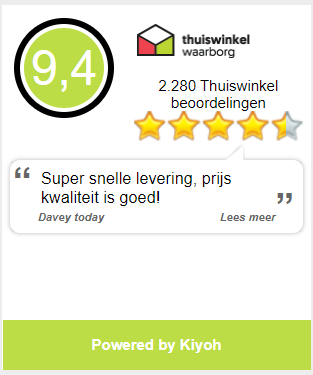Drones legislation in the Netherlands
On this page you will find a collection of useful links and information about the laws and regulations surrounding drones in the Netherlands. Last update: September 23, 2017.
Drone legislation in the Netherlands
Flying a professional and recreational drone? Download here the overview "Regulations for drones - Differences in regulations for recreational professionals (state of affairs September 2016") published by the Ministry of Infrastructure and the Environment: https://www.rijksoverheid.nl/binaries/rijksoverheid/documenten/brochures/2016/07 /06/rules-for-drones-differences-between-recreative-and-professional-use/fachtsheet-regulations-drones-table-professions-vs-hobby-sept-2016.pdf
Recreational drone use legislation
These rules are valid for drones weighing up to 25 kilograms.
It is not allowed to:
- flying in No Fly Zones (NFZ)
- fly outside Airspace Category G *
- fly within 5 km from civilian and military airports
- flying higher than 120 meters above the ground or an object (with permission above some flying clubs even up to 300 meters)
- fly further than 100 meters away from yourself
- flying within 50 meters of other drones
- fly above contiguous buildings (keep at least 50 meters horizontal distance)
- fly above people (opinions) (keep at least 150 meters horizontal distance)
- fly above car (highways) and train tracks (keep at least 150 meters horizontal distance)
- fly above port and industrial areas
- flying above works of art
- to fly over Natura 2000 areas
- jeopardize the privacy of others
- hinder air traffic
- fly at night
You should:
- take into account and give priority to other air traffic
- keep a minimum horizontal distance of 50 meters from buildings and groups of people
- take into account the privacy of others
- always keep an eye on the drone
- always check the condition of your drone
- have a spotter with you in military low-flying areas
* Category G
The remaining air area below the lowest standard flight level. Compare it to country roads. There is no traffic control, the speed is limited to 250 knots, flying is permitted during the day and radio contact is not required, unless flying on instruments and an information service is assured.
Legislation professional / commercial drone use
Professional drone pilots who want to use their drone for commercial activities must, depending on the tasks and relevant rules, be in possession of ROC or ROC light. In short: a ROC light can do everything that ROC is allowed, but only 1/3 of the distance.
Other sources
No posts found
Write a review


